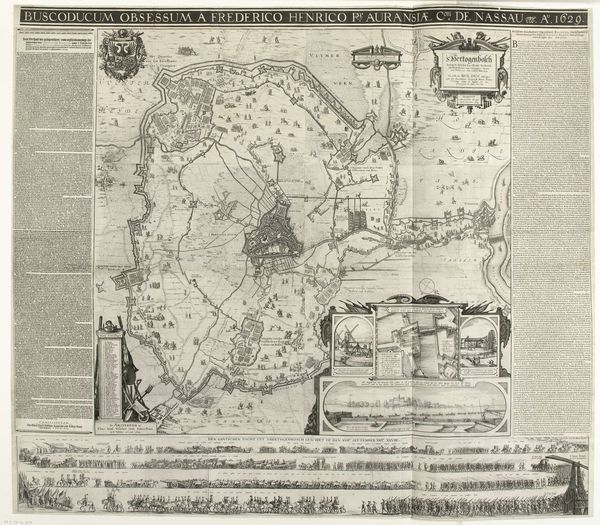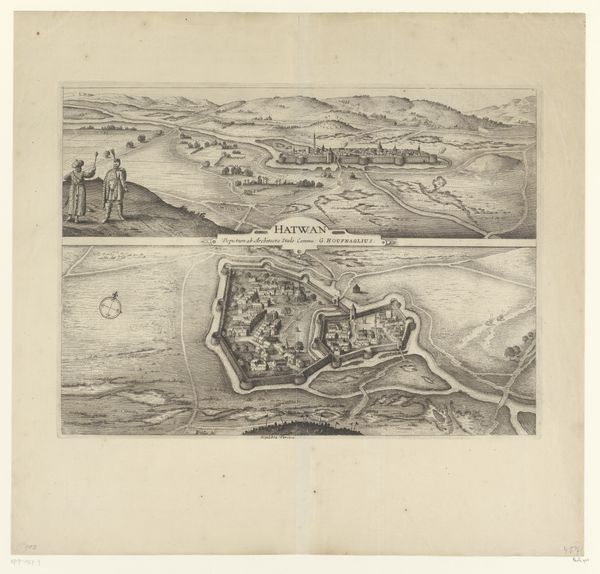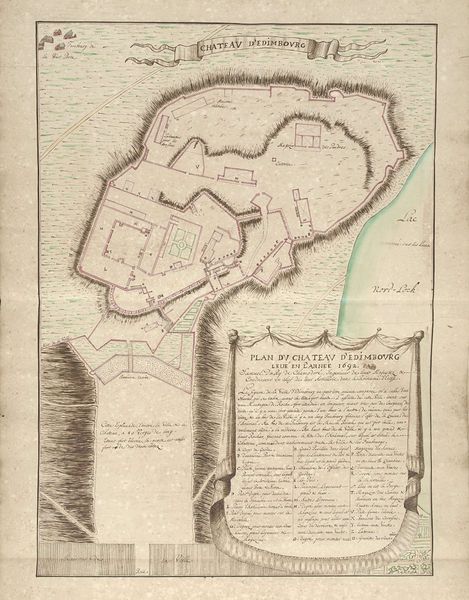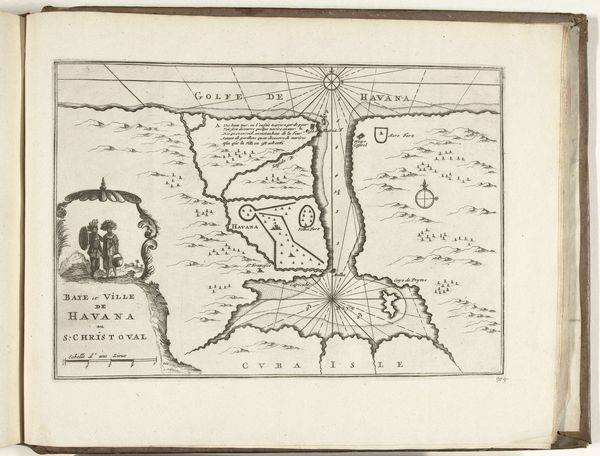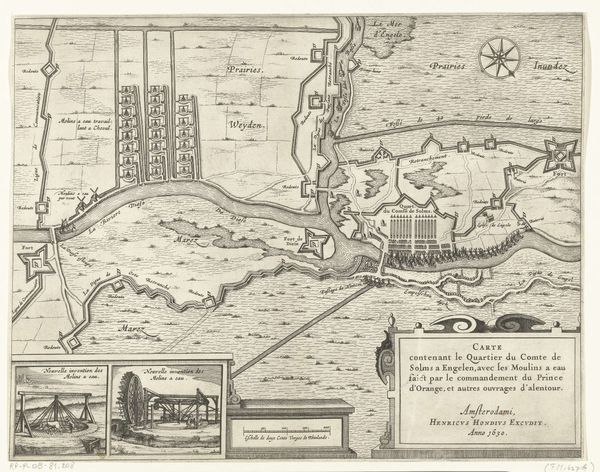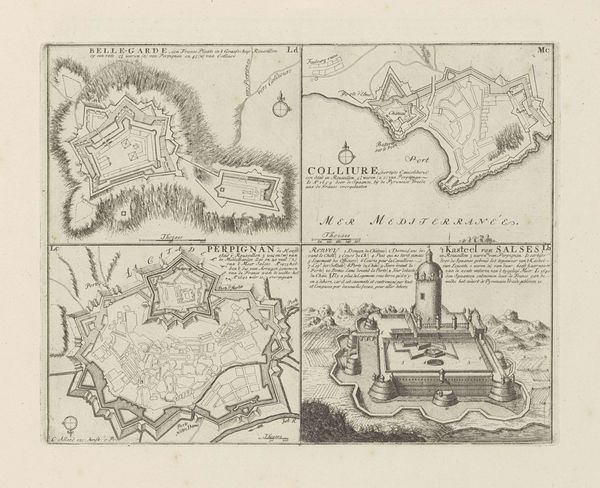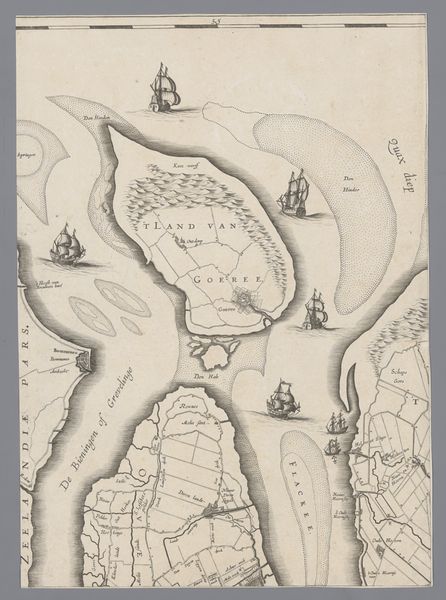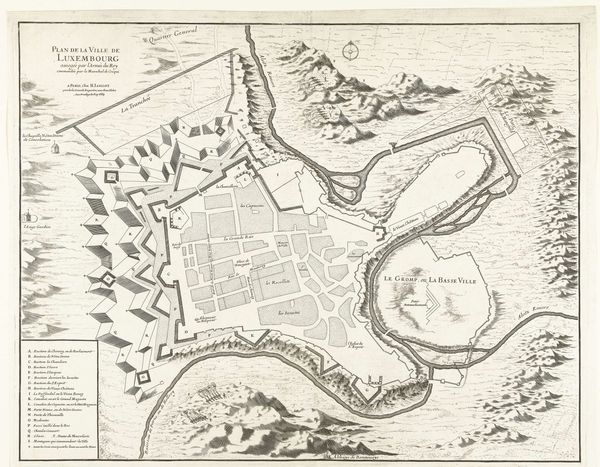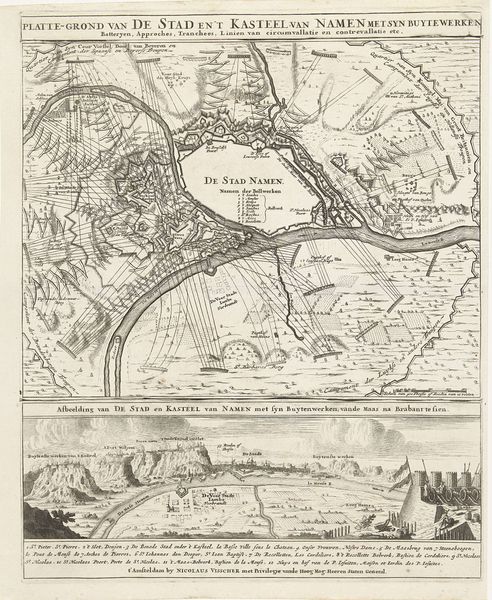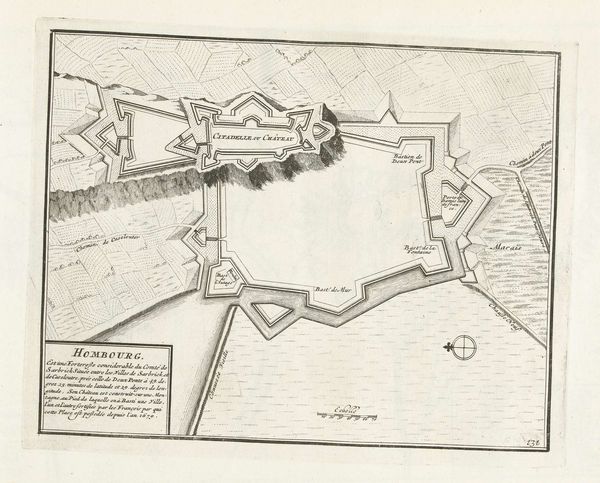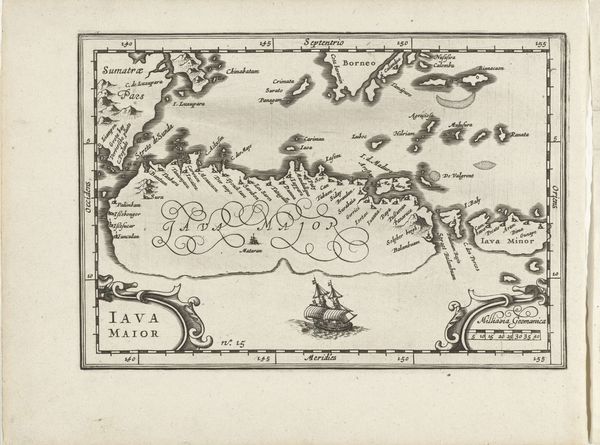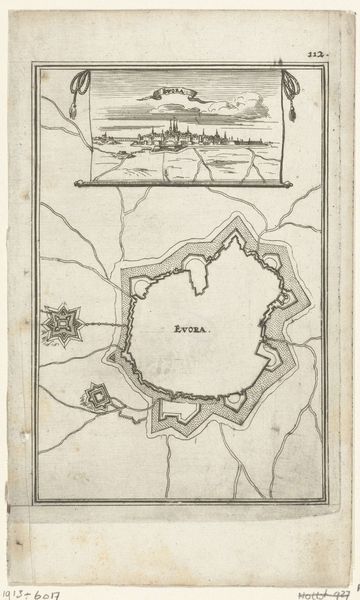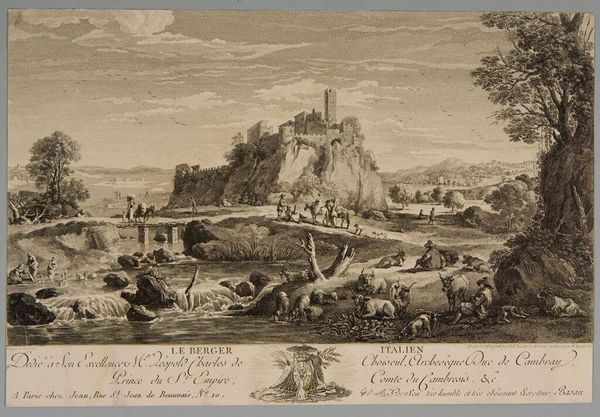
The Roman antiquities, t. 1, Plate XLIII. Plan of the ancient Roman Forum 1756
0:00
0:00
drawing, print, etching, architecture
#
drawing
# print
#
etching
#
geometric
#
cityscape
#
history-painting
#
architecture
Copyright: Public domain
Curator: Giovanni Battista Piranesi's etching, "The Roman antiquities, t. 1, Plate XLIII. Plan of the ancient Roman Forum," made in 1756, presents a meticulous plan of the ancient Roman Forum alongside an imagined vision of the ruins. What strikes you about this print? Editor: Well, the detail is astonishing! I'm fascinated by the way Piranesi combines the almost scientific precision of the map with what seems like a more romantic, almost imagined view of the ruins. How should we understand this blend of approaches? Curator: Precisely! Notice how Piranesi, rather than idealizing a glorious past, grapples with the material realities of architectural decay and labor? He’s not just documenting the Forum; he’s also highlighting the transformative, even destructive, power of time, and questioning how classical ideas influenced his contemporary production of etchings as commodities for sale to Grand Tourists. Where did the raw materials originate to erect Roman forums and mountainsides? What transformations happened throughout the process? How many sets of hands labored in that same material transformation? Editor: That’s an interesting point. The print isn't just about the aesthetics of Rome, it's also a historical document shaped by material concerns and modes of artistic labor that bring it into being. But is the lower half all imagination then, not grounded in reality? Curator: Not necessarily imagination in opposition to reality, but a visualization and romanticisation of a physical location. Do we know where exactly his vantage point may have been? Look closely, there’s labor documented even in the bottom image. People must have toiled over those grounds, their production now eroded and weathered. Editor: So, by examining the etching, we see Piranesi not just as an artist, but as a figure embedded within a specific system of production, depicting the remains of another? That really changes how I look at it. Curator: Exactly! He directs our attention to both the enduring presence of ancient materials and the constantly changing landscape of their social and economic meanings through image-making, blurring lines of art and craft.
Comments
No comments
Be the first to comment and join the conversation on the ultimate creative platform.
